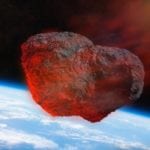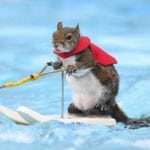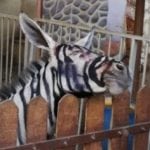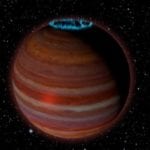 Creepy
Creepy  Creepy
Creepy  Movies and TV
Movies and TV 10 Movies That Get Elite Jobs Right, According to Experts
 Weird Stuff
Weird Stuff 10 Times Real Laws Were Based on Bizarre Hypotheticals
 Animals
Animals 10 Inspiring Tales of Horses Being Human
 Mysteries
Mysteries Top 10 Haunting Facts About the Ghost Ship MV Alta
 History
History 10 Surprising Stories About the Texas Rangers
 Humans
Humans 10 Philosophers Who Were Driven Mad by Their Own Theories
 Miscellaneous
Miscellaneous 10 Video-Game-Worthy Weapons and Armors from History
 Weird Stuff
Weird Stuff 10 Psychics Who Accurately Predicted Wartime Events
 The Arts
The Arts 10 Pieces of Art Inspired by a Broken Heart
 Creepy
Creepy 10 Death Superstitions That Will Give You the Creeps
 Movies and TV
Movies and TV 10 Movies That Get Elite Jobs Right, According to Experts
 Weird Stuff
Weird Stuff 10 Times Real Laws Were Based on Bizarre Hypotheticals
Who's Behind Listverse?

Jamie Frater
Head Editor
Jamie founded Listverse due to an insatiable desire to share fascinating, obscure, and bizarre facts. He has been a guest speaker on numerous national radio and television stations and is a five time published author.
More About Us Animals
Animals 10 Inspiring Tales of Horses Being Human
 Mysteries
Mysteries Top 10 Haunting Facts About the Ghost Ship MV Alta
 History
History 10 Surprising Stories About the Texas Rangers
 Humans
Humans 10 Philosophers Who Were Driven Mad by Their Own Theories
 Miscellaneous
Miscellaneous 10 Video-Game-Worthy Weapons and Armors from History
 Weird Stuff
Weird Stuff 10 Psychics Who Accurately Predicted Wartime Events
 The Arts
The Arts 10 Pieces of Art Inspired by a Broken Heart
10 Offbeat Stories You Might Have Missed Last Week (7/2/18)
With another week in the history books, it’s time to take a step back and review some of the stories that made the news over the last several days. Click here if you want to learn about recent major headlines. Otherwise, press on for a dose of the bizarre and unique.
This week, we take a look at the past, present, and future. The past comes in the form of historical artifacts, both intact and now destroyed. The future is represented by our extraplanetary discoveries and our ambitions to leave Earth. We are also reminded that we should also have a bit of fun in the present, whether this comes in the form of Hello Kitty bullet trains or giant penis drawings.
10 New Coat Of Paint For Old Coat Of Arms

Spanish churches refuse to learn to leave art restoration to the professionals. Back in 2012, one such “rehabilitation” of a fresco in the small Spanish town of Borja became an international sensation. The original painting dated to 1930 and depicted Jesus Christ with a crown of thorns. A well-meaning but completely ill-prepared elderly parishioner volunteered to touch up the fresco a bit and bring back some of its former glory. The comically bad result looked nothing like Jesus and barely looked human. It became mockingly known online as “Monkey Christ.”
The same thing happened again in a town called Estella. This time, however, the “victim” of the makeover was a 500-year-old wooden sculpture of St. George.[1] Pictures on social media showed the knight with a completely new coat of paint, including a rosy pink face and bright-colored armor. Perhaps most disturbingly, the restoration was done by a semiprofessional arts and crafts school that should have known better.
Local officials are angry with the church, as they weren’t informed of any restoration plans. The parish priest is upset with the art school, as he claims he only wanted the sculpture cleaned. Estella mayor Koldo Leoz brought in actual experts in the hopes that the 16th-century work of art could be salvaged.
Perhaps things will work out in the end. After all, the “Monkey Christ” fresco turned out to be a huge tourism boon for the church in Borja.
9 Happy Galactic Tick Day!

On June 26, we observed Galactic Tick Day—a celebration that marks the passing of a centi-arcsecond of a galactic year.
A galactic year is the time it takes for the Sun (and us) to make one revolution around the center of the Milky Way galaxy. That’s about 225 million years, which, to us, is a pretty long time to wait. Instead, people came up with a more modest interval—the galactic tick. This time period represents 1/100 of an arcsecond of a full year, or 0.0000077 galactic years. In Earth terms, it’s 633.7 days.
The first Galactic Tick Day is considered to have occurred one galactic tick after Hans Lippershey filed the patent for the first telescope on October 2, 1608.[2] Since then, 236 galactic ticks passed, although this is only the second observance of the holiday. The goal is to celebrate mankind’s knowledge of the galaxy’s motion and to honor the telescope for allowing us to achieve that awareness.
8 Hello Kitty Has A Bullet Train

Japanese commuters will enjoy a unique travel experience as they ride in the country’s latest bullet train, themed around merchandising phenomenon Hello Kitty.
Right off the bat, the train stands out through its white and pink color scheme.[3] The theme continues inside, where everything, including chairs, floors, doors, and windows, flaunts the ubiquitous Hello Kitty branding. The first carriage is, more or less, a gift shop, as it has no seats but allows passengers to buy regional foods and products. Another carriage also had its seats removed and replaced with space for a photo-op alongside a giant Hello Kitty doll in uniform.
Hello Kitty is a marketing giant with its branding present on almost any kind of merchandise you can think of. West Japan Railway are hoping this partnership will boost tourism. The bullet train entered service on July 1, traveling between Osaka and Fukuoka. This marked the beginning of a three-month run, and if it proves successful, the train will either prolong its service or be moved to another route.
7 The Most Ambitious Game Of Tag In The World

Tag is a timeless game that many of us tried at one point or another when we were children. Some people, however, remain fans well into adulthood and can take it to the extreme. One woman proved it last week when she traveled over 6,400 kilometers (4,000 mi) from her home in North Carolina to Scotland in order to tag another player.
Back in 2014, Georgina Wilkinson befriended a quirky group of people while on a trip to China. Even though they lived in different countries, they decided to start an international game of tag. Before recent events, Georgina was “it.” She found the perfect opportunity to take fellow player Drew McEwan by surprise and tag him at his niece’s christening at Loch Lomond.
Georgina enlisted the help of Drew’s siblings. They picked her up at the airport and drove her to the event, where she disguised herself as the gardener and lay in wait. At one point, the photographer, also in on the gag, asked Drew to tell the gardener to step out of a shot. That is when Georgina pounced, tagging a stunned Drew and running away straight to the airport for her flight back home.[4]
6 Gay Swans Versus Austrians
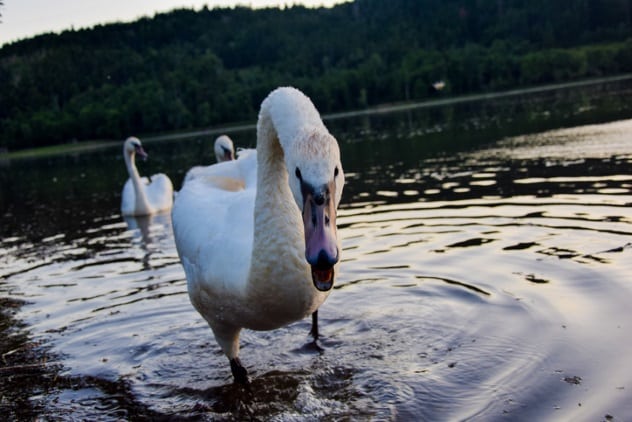
A gay swan couple had to be forcibly removed from a lake in Austria after they launched several violent attacks to protect their nest from pesky humans.
Most people know that wild animals tend to behave more aggressively when they have young to care for. They also know that swans, in general, tend to be antagonistic jerks. The residents of Grundlsee took this into account when dealing with a pair of local swans, but they finally said “enough is enough” and had the animals relocated.
The waterfowl began their attacks last summer, targeting people and boats that got too close to their nest. They became far more aggressive this year, though, with several people requiring hospital care. The most dangerous attacks occurred when the swans jumped onto swimmers and tried to keep them underwater. Mayor Franz Steinegger decided to act before tragedy struck and enlisted the help of wildlife expert Alexander Groder to remove the birds from the lake.
After they were captured, we learned two interesting things. Both swans are males, and the valuable cargo they were protecting wasn’t eggs or cygnets. It was a colored plastic cup.[5]
The swans now live in a special pond in Tyrol. Groder believes that their atypical relationship could have been a source of their extreme aggression, as one of the males was likely strongly suppressed by the other.
5 What Is ‘Oumuamua?
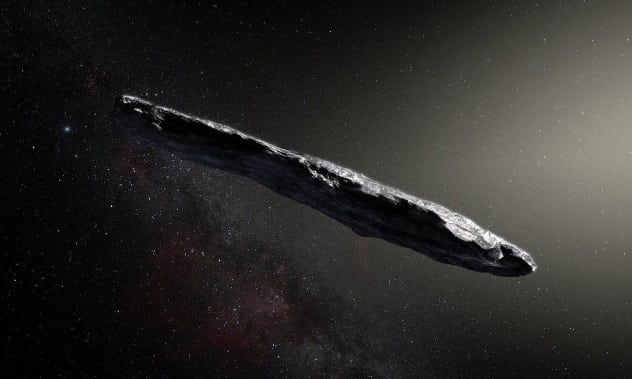
One of the biggest space stories of 2017 was the detection of the first ever interstellar object to pass through our solar system. We named it ‘Oumuamua. More problematic, however, was figuring out exactly what it was. At first, people said it was a comet. Afterward, they decided it was an asteroid because it didn’t have a tail as it went past the Sun. Some even floated the intriguing idea of an alien spacecraft due to its bizarre trajectory and unusual, cigar-like shape. Alas, we detected no radio signals coming from ‘Oumuamua, so it remained classified an asteroid.
Now, however, ESA scientists are calling it a comet again. A recent study published in Nature claims that by studying the path of the interstellar object, researchers concluded that ‘Oumuamua benefits from a form of acceleration unrelated to the gravitational influence of the Sun, the planets, and other celestial objects it encountered.
They believe the most likely explanation is “outgassing.”[6] The interstellar traveler is being propelled by the loss of water vapor, dust, and gases, but in quantities too small to be detected by our instruments. We’ll have to see if this decision sticks or if ‘Oumuamua will face reclassification again.
4 Google Maps Spots Giant Penis
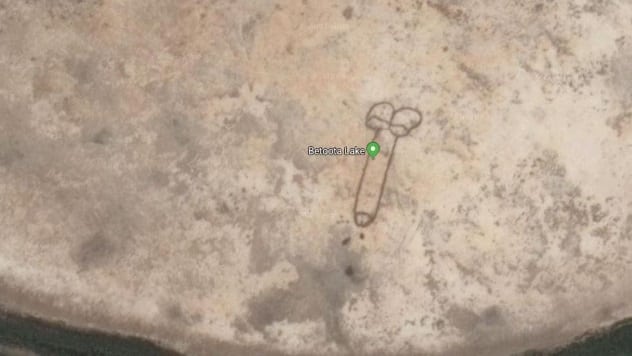
Google Maps unearthed Australia’s most recent landmark—a giant penis etched into a dry lake bed in Marcus Hill, a small rural community, part of the City of Greater Geelong.
The creation recently gained popularity after it was shared online on the Facebook group Take the Piss Geelong, which focuses on the strange and humorous aspects of the city. It appears that most locals have been aware of the penis for months, although its “author” still remains unidentified.
The etching was clearly visible from Google Maps and had been tagged as a landmark called “Betoota Lake.”[7] Its online popularity prompted many strangers to visit the peculiar feature and leave five-star reviews. As of this writing, Google has removed the landmark tag. However, anyone can still view the “masterpiece” using the Google Maps service by searching Marcus Hill and looking for the circular lake bed off Shell Road.
3 The New Ruler Of Asgardia

The first-ever space nation, Asgardia, officially has a leader. Unsurprisingly, it is the man who came up with the idea and funded the whole project—Russian businessman Dr. Igor Ashurbeyli.
Dr. Ashurbeyli first announced his plans to create a space kingdom in 2016. Last year, he established a parliament, adopted a constitution, and launched the nation’s first satellite, Asgardia-1. Recently, the Russian scientist held a ceremony at the Hofburg Palace in Vienna, where, in front of hundreds of diplomats, scientists, and law experts, he proclaimed himself head of state of Asgardia.[8]
This is all part of a plan to have the space kingdom become a member of the United Nations. Of course, there are many more rules and agreements Asgardia will have to adhere to in order to be eligible to apply for membership. At the same ceremony, Ashurbeyli announced that the next steps involve setting up a national bank and currency and a ministry of foreign affairs.
Over 200,000 people have signed up so far to become citizens of Asgardia. At the moment, everyone is eligible, although Dr. Ashurbeyli said in the future, citizenship might be granted based on IQ tests to ensure that Asgardia attracts only the best and brightest. These people would live on space stations orbiting Earth, although a lunar base is also an objective. Ashurbeyli believes that Asgardia will become a reality within 25 years.
2 Europe’s Oldest Cockatoo
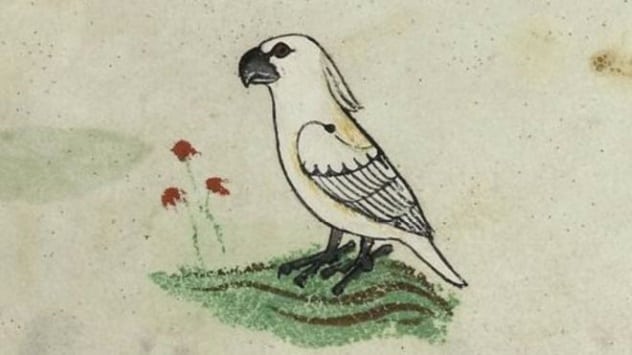
A group of Finnish and Australian scientists uncovered the oldest European depiction of a cockatoo in a 13th-century falconry book once owned by Holy Roman Emperor Frederick II.
The bird is one of over 900 featured in the book. Experts believe that it represents either a triton or a yellow-crested cockatoo, which would likely mean that it came from Northern Australia, Papua New Guinea, or islands off Indonesia.
The book, titled De Arte Venandi cum Avibus (The Art of Hunting with Birds), is dated between 1241 and 1248. This is 250 years older than the previous record-holder, which was a 1496 painting by Italian artist Andrea Mantegna. The reason this is significant is that it shows the existence of a medieval trade network which included, at least, the north of Australia and extended to the Middle East and beyond.[9]
According to the Latin description next to the drawing, the cockatoo was presented as a gift to Frederick II from the sultan of the Ayyubid dynasty. Study coauthor Dr. Heather Dalton from the University of Melbourne believes the bird traveled through a trade route from its original habitat to Cairo and was sent to Sicily from there.
1 Organic Molecules Found On Enceladus

A few weeks ago, Mars made waves when NASA announced that they found organic molecules containing carbon and hydrogen on the Red Planet. While these in no way conclusively confirm the presence of life, as they can also be created by nonbiological processes, they are good indicators that help show that ancient Mars had all the ingredients necessary to sustain life. This week, scientists found organic molecules on Enceladus.
The sixth-largest moon of Saturn, Enceladus has long been considered one of the best candidates for extraterrestrial life in our solar system. It has a subterranean ocean and hydrothermal vents, and Cassini was able to detect complex organic molecules larger than any we’ve ever found before.[10]
The now-destroyed probe managed to do a flyby through one of Enceladus’s erupting geysers, collect a sample, and analyze it using a mass spectrometer and the Cosmic Dust Analyzer (CDA). The results were a big surprise for scientists back on Earth, who weren’t expecting to find organic molecules of this magnitude. Again, they are something we expect to find where life exists but, on their own, are not irrefutable evidence for life. However, given the other suitable conditions found there, Enceladus emerges as a strong contender for a world with alien life.
Read more offbeat stories you might have missed from June 23, 2018 and June 17, 2018.
